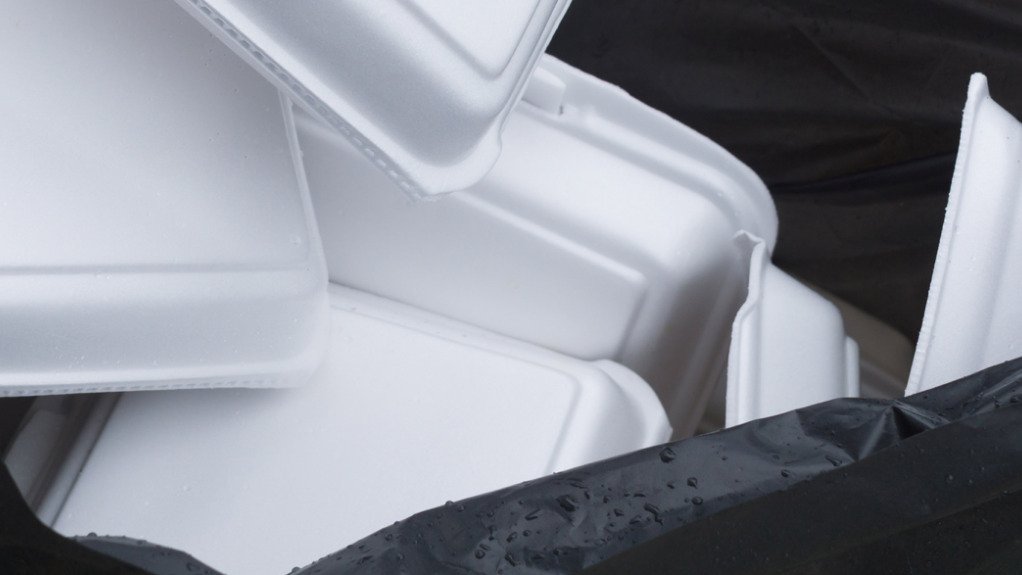New EPR regulations only for non-food packaging applications



EASY TO RECYCLE Polystyrene is a relatively easy plastic to return and recycle into food safe packaging such as yogurt cups. However, to ensure that there is economic efficiency, the recycling process would need to be done at scale
ADRI SPANGENBERG This was a huge achievement as our members are now able to claim recyclability on their packaging. This ensures that the consumer knows that polystyrene can and is being recycled
While the packaging industry is working toward the recent Extended Producer Responsibility (EPR) regulations stipulating that 30% of recycled material should be used in the production of packaging, there needs to be a clear distinction that this can only be done in non-food applications, says the African Polystyrene Industry Alliance (APIA).
APIA director Adri Spangenberg explains that the regulations help ensure that the industry has legislation that supports recycling targets, while instilling a heightened awareness of the importance of sustainable practices.
As such, the APIA is in support of these transitions to recycled content when it is used in the correct applications.
Worldwide, recycling technology has primarily been developed for polyethylene terephthalate applications, with organisations such as European joint industry initiative Styrenics Circular Solutions since developing technology for food-approved packaging using recycled content for polystyrene too.
Spangenberg reiterates that, where the EPR regulations stipulate recycled content is to be included in packaging, the APIA urges that, in the South African context, this can only be done for non-food applications such as insulation, for now.
“We believe that the technology to use recycled content in food packaging will be available in South Africa soon,” she states, citing a technology developed by Canadian recycling centre Polystyvert, which can upcycle any polystyrene, even contaminated polystyrene, back into saleable, food-approved packaging material.
“This technology has been a game changer in Europe and the US where recycled content for polystyrene food applications is already a reality,” states Spangenberg.
She notes that polystyrene is a relatively easy plastic to return and recycle, into, for example, yogurt cups. However, to ensure that there is economic efficiency, the recycling process would need to be done at scale.
The Effects of ERP Implementation
In 2023, through work done with registered producer responsibility organisation the EPR Waste Association of South Africa, the APIA was able to reach a 31% recycling rate, reaching EPR targets.
“This was a huge achievement as our members are now able to claim recyclability on their packaging. This ensures that the consumer knows that polystyrene can and is being recycled,” highlights Spangenberg.
On the other hand, access to polystyrene from consumers and industry remains a challenge, owing to the lack of separation at source in South Africa.
The APIA says it is important to know the source of raw materials, and therefore, its members can voluntarily sign up for APIA’s Food Compliance Responsibility Initiative (FCRI).
The FCRI has members of APIA sign and pledge that they will only use food-approved raw materials in the production of each of their food application products.
The most pressing issue is the inaccessibility to separated source material, and as such the APIA encourages consumers and the industry to recycle polystyrene rather than having it travel to landfills.
Despite the proven success of EPR initiatives through take-back schemes and more drop-off sites countrywide, there is a need to progress both “to the next level”.
Spangenberg concludes that, with South Africa’s reliance on polystyrene as an economical packaging material, and with a guaranteed end market for recycling, APIA is in a fortunate position, as it has a material with a “great” life-cycle assessment and an end market for recycling that will not have to rely on exports, as many other industries do.
Article Enquiry
Email Article
Save Article
Feedback
To advertise email advertising@creamermedia.co.za or click here
Press Office
Announcements
What's On
Subscribe to improve your user experience...
Option 1 (equivalent of R125 a month):
Receive a weekly copy of Creamer Media's Engineering News & Mining Weekly magazine
(print copy for those in South Africa and e-magazine for those outside of South Africa)
Receive daily email newsletters
Access to full search results
Access archive of magazine back copies
Access to Projects in Progress
Access to ONE Research Report of your choice in PDF format
Option 2 (equivalent of R375 a month):
All benefits from Option 1
PLUS
Access to Creamer Media's Research Channel Africa for ALL Research Reports, in PDF format, on various industrial and mining sectors
including Electricity; Water; Energy Transition; Hydrogen; Roads, Rail and Ports; Coal; Gold; Platinum; Battery Metals; etc.
Already a subscriber?
Forgotten your password?
Receive weekly copy of Creamer Media's Engineering News & Mining Weekly magazine (print copy for those in South Africa and e-magazine for those outside of South Africa)
➕
Recieve daily email newsletters
➕
Access to full search results
➕
Access archive of magazine back copies
➕
Access to Projects in Progress
➕
Access to ONE Research Report of your choice in PDF format
RESEARCH CHANNEL AFRICA
R4500 (equivalent of R375 a month)
SUBSCRIBEAll benefits from Option 1
➕
Access to Creamer Media's Research Channel Africa for ALL Research Reports on various industrial and mining sectors, in PDF format, including on:
Electricity
➕
Water
➕
Energy Transition
➕
Hydrogen
➕
Roads, Rail and Ports
➕
Coal
➕
Gold
➕
Platinum
➕
Battery Metals
➕
etc.
Receive all benefits from Option 1 or Option 2 delivered to numerous people at your company
➕
Multiple User names and Passwords for simultaneous log-ins
➕
Intranet integration access to all in your organisation




















